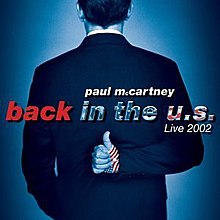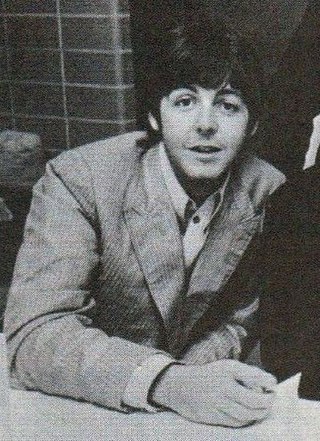
"Paul is dead" is an urban legend and conspiracy theory alleging that English musician Paul McCartney of the Beatles died in 1966 and was secretly replaced by a look-alike. The rumour began circulating in 1966, gaining broad popularity in September 1969 following reports on American college campuses.

Let It Be is the twelfth and final studio album by the English rock band the Beatles. It was released on 8 May 1970, nearly a month after the official announcement of the group's public break-up, in tandem with the documentary of the same name. Concerned about recent friction within the band, Paul McCartney had conceived the project as an attempt to reinvigorate the group by returning to simpler rock 'n' roll configurations. Its rehearsals started at Twickenham Film Studios on 2 January 1969 as part of a planned television documentary showcasing the Beatles' return to live performance.
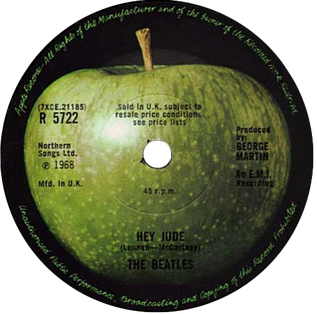
"Hey Jude" is a song by the English rock band the Beatles that was released as a non-album single in August 1968. It was written by Paul McCartney and credited to the Lennon–McCartney partnership. The single was the Beatles' first release on their Apple record label and one of the "First Four" singles by Apple's roster of artists, marking the label's public launch. "Hey Jude" was a number-one hit in many countries around the world and became the year's top-selling single in the UK, the US, Australia and Canada. Its nine-week run at number one on the Billboard Hot 100 tied the all-time record in 1968 for the longest run at the top of the US charts, a record it held for nine years. It has sold approximately eight million copies and is frequently included on music critics' lists of the greatest songs of all time.

"The Long and Winding Road" is a song by the English rock band the Beatles from their 1970 album Let It Be. It was written by Paul McCartney and credited to Lennon–McCartney. When issued as a single in May 1970, a month after the Beatles' break-up, it became the group's 20th and final number-one hit on the Billboard Hot 100 chart in the United States.

Driving Rain is the twelfth solo studio album by English musician Paul McCartney, released on 12 November 2001 as a double LP, a single cassette, and single CD.
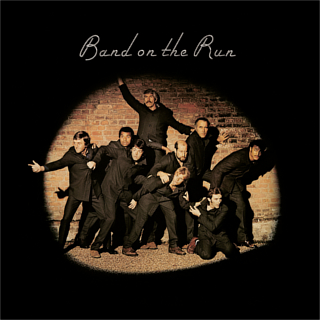
Band on the Run is the third studio album by the British–American rock band Paul McCartney and Wings, released on 30 November 1973. It was McCartney's fifth album after leaving the Beatles in April 1970 and his final album on Apple Records. Although sales were modest initially, its commercial performance was aided by two hit singles – "Jet" and "Band on the Run" – such that it became the top-selling studio album of 1974 in the United Kingdom and Australia, in addition to revitalising McCartney's critical standing. It remains McCartney's most successful album and the most celebrated of his post-Beatles works.

Anthology 3 is a compilation album by the Beatles, released on 28 October 1996 by Apple Records as part of The Beatles Anthology series. The album includes rarities and alternative tracks from the final two years of the band's career, ranging from the initial sessions for The Beatles to the last sessions for Let It Be and Abbey Road in 1969 and early 1970. It is the last in a trilogy of albums with Anthology 1 and Anthology 2, all of which tie in with the televised special The Beatles Anthology.

Ram is the only studio album credited to the husband-and-wife music duo Paul and Linda McCartney, and the former's second album post-Beatles. Released on 17 May 1971 by Apple Records, it was recorded in New York with guitarists David Spinozza and Hugh McCracken, and future Wings drummer Denny Seiwell. Three singles were issued from the album: "Uncle Albert/Admiral Halsey", "The Back Seat of My Car" and "Eat at Home". The recording sessions also yielded the non-album single "Another Day".

McCartney is the debut solo studio album by the English rock musician Paul McCartney, released on 17 April 1970 by Apple Records. McCartney recorded it in secrecy, mostly using basic home-recording equipment at his house in St John's Wood. Mixing and some recording took place at professional London studios. In its loosely arranged performances, McCartney eschewed the polish of the Beatles' past records in favour of a lo-fi style. Apart from occasional contributions by his wife, Linda, McCartney performed the entire album alone by overdubbing on four-track tape.

Red Rose Speedway is the second studio album by the English-American rock band Wings, although credited to "Paul McCartney and Wings". It was released through Apple Records on 4 May 1973, preceded by its lead single, the ballad "My Love". By including McCartney's name in the artist credit, the single and album broke with the tradition of Wings' previous records. The change was made in the belief that the public's unfamiliarity with the band had been responsible for the weak commercial performance of the group's 1971 debut album Wild Life.

Back in the World is a live album by Paul McCartney composed of highlights from his spring 2002 "Driving USA" tour in the United States in support of McCartney's 2001 release Driving Rain. It was released internationally in 2003, save for North America – where Back in the U.S. saw issue four months earlier in 2002 – to commemorate his first set of concerts in almost ten years.

"Ob-La-Di, Ob-La-Da" is a song by the English rock band the Beatles from their 1968 double album The Beatles. It was written by Paul McCartney and credited to the Lennon–McCartney partnership. Following the album's release, the song was issued as a single in many countries, although not in the United Kingdom or the United States, and topped singles charts in Australia, Japan, New Zealand, Switzerland and West Germany. When belatedly issued as a single in the United States in 1976, it peaked at number 49 on the Billboard Hot 100.

Paul Is Live is a live album by Paul McCartney, released in 1993 during his New World Tour in support of his studio album Off the Ground, released that same year. Paul Is Live contains live recordings of McCartney and his touring band—which at the time included his then-wife Linda and guitarist Robbie McIntosh—performing songs by McCartney's former bands The Beatles and Wings, as well as songs from his solo career. The tracks included on the album were recorded at various concerts during his New World Tour, in several American cities and in Australia.
The Beatles were an English rock band, active from 1960 until 1970. From 1962 onwards, the band's members were John Lennon, Paul McCartney, George Harrison and Ringo Starr. Their break-up is attributed to numerous factors, including: the strain of the Beatlemania phenomenon, the 1967 death of their manager Brian Epstein, bandmates' resentment of McCartney's perceived domineering behaviour, Lennon's heroin use and his relationship with Yoko Ono, Harrison's increasingly prolific songwriting, the floundering of Apple Corps, the Get Back project and managerial disputes.
The Apple scruffs were a group of devoted Beatles fans who congregated outside the Apple Corps building and at the gates of Abbey Road Studios in London during the late 1960s, in the hope of seeing or interacting with one of the band members. According to Apple press officer Derek Taylor, when The Sunday Times wrote a feature article on the company in the late 1960s, their map included a location for the scruffs, on the steps of the offices at 3 Savile Row.

Paul McCartney: Many Years from Now is a 1997 biography of Paul McCartney by Barry Miles. It is the "official" biography of McCartney and was written "based on hundreds of hours of exclusive interviews undertaken over a period of five years", according to the back cover of the 1998 paperback edition. The title is a phrase from McCartney's song "When I'm Sixty-Four", from the Beatles' 1967 album Sgt. Pepper's Lonely Hearts Club Band. The book was first published in the United Kingdom in October 1997 by Secker & Warburg.

"Give Ireland Back to the Irish" is the debut single by the British–American rock band Wings that was released in February 1972. It was written by Paul McCartney and his wife Linda in response to the events of Bloody Sunday, on 30 January that year, when British troops in Northern Ireland shot dead thirteen civil rights protestors. Keen to voice their outrage at the killings, Wings recorded the track two days later at EMI Studios in London. It was the band's first song to include Northern Irish guitarist Henry McCullough.

"My Love" is a song by the British–American band Paul McCartney and Wings that was first released as the lead single from their 1973 album Red Rose Speedway. It was written by Paul McCartney as a love song to his wife and Wings bandmate Linda. The single marked the first time that McCartney's name appeared in the artist credit for a Wings record, after their previous releases had been credited to Wings alone. Released on 23 March 1973, the song topped the Billboard Hot 100 chart in the US for four weeks and peaked at number 9 on the UK Singles Chart. The single was viewed as Wings' first significant success in the US and helped Red Rose Speedway achieve commercial success.
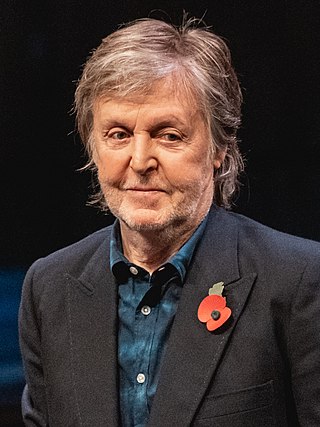
Sir James Paul McCartney is an English singer, songwriter and musician who gained worldwide fame with the Beatles, for whom he played bass guitar and the piano, and shared primary songwriting and lead vocal duties with John Lennon. One of the most successful composers and performers of all time, McCartney is known for his melodic approach to bass-playing, versatile and wide tenor vocal range, and musical eclecticism, exploring genres ranging from pre–rock and roll pop to classical, ballads, and electronica. His songwriting partnership with Lennon is the most successful in modern music history.
"Six O'Clock" is a song by the English rock musician Ringo Starr from his 1973 album Ringo. It was written by Starr's former Beatles bandmate Paul McCartney and the latter's wife, Linda, who also participated in the recording of the song. It was the first time McCartney and Starr had worked together since the Beatles' break-up in 1970. Their collaboration reflected an easing of the tensions that had existed between the two musicians for much of that period.
